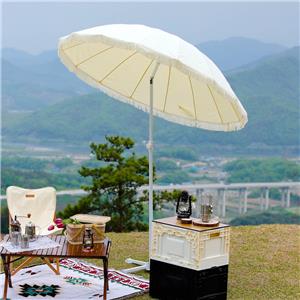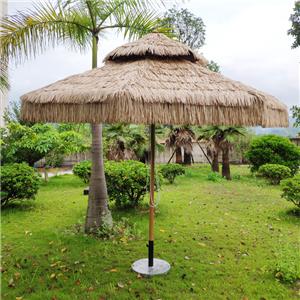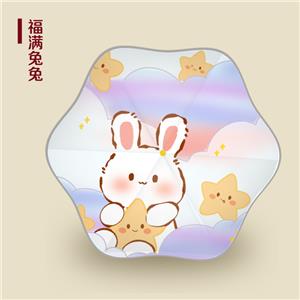A Brief History of Chinese Raingear
Pre Qin Dynasty
Early umbrellas were called "lids" or "umbrellas" and were made of grass, bamboo, and other materials. They had handles to hold and looked similar to modern umbrellas, but could not be put away yet.
Umbrellas made of silk first appeared during the Western Zhou Dynasty. Due to their high price, silk umbrellas were generally used by nobles and were mainly decorations for high-ranking officials, scholars, and officials, as well as symbols of power.
The common people cannot afford silk umbrellas and often use straw hats or raincoats in their daily lives. There is a record in the Book of Songs, Xiao Ya, that people wear raincoats and hats: "When the herdsmen come to think, they wear straw hats and raincoats."
The raincoat has an important characteristic and symbol of ancient Chinese clothing: a top and a lower garment. The top is called "raincoat drape", as the name suggests, it is draped over the shoulders. The lower garment is an apron short skirt, called a "raincoat skirt", which is basically similar to a garment. Some are slightly longer, connecting from the chest to the waist, somewhat like modern women's camisole skirts.
Qin and Han Dynasties
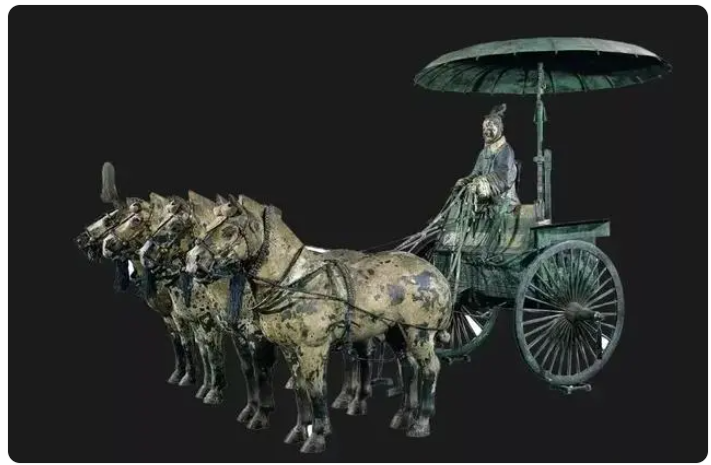
Umbrellas during this period were mainly popular among the privileged class, serving not only as shade from the sun and rain, but also as a symbol of status and status. Umbrellas installed on cars are also known as umbrella covers. Ordinary people do not have the right to use umbrella covers, and of course, they cannot afford them.
As for the umbrella in hand, it is usually a crank umbrella, why bend the handle? Noble travelers are usually accompanied by attendants holding umbrellas, but the status of attendants is low and cannot coexist with them. Therefore, a crank umbrella device is specially designed to allow umbrella holders to follow behind. It is really a great effort to showcase their noble identity.
During the Qin and Han dynasties, almost every household had a raincoat and a bamboo hat. Xu Shen of the Eastern Han Dynasty wrote in his "Shuowen": "The raincoat is used to prepare for rain, and the bamboo hat is used to guard against the heat." At that time, it had already become a daily tool for the common people.
Wei, Jin, Southern and Northern Dynasties
Umbrellas from the Wei, Jin, Southern and Northern Dynasties period, like their predecessors, were also a symbol of status and status that could only be used by specific social classes. According to the regulations of the Northern Qi Dynasty, Wang and Shu surnamed Wang, with the same courtesy as three or more officials, were allowed to use Zhai Wei fans and purple umbrellas. Emperor and officials of third rank or above shall use green umbrellas and red umbrellas. From below, all the way to the scholars, using green umbrellas and blue skies.
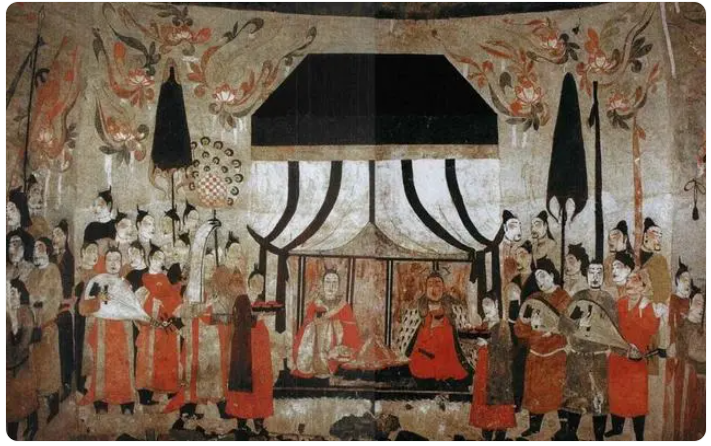
In the "Jade Shavings", it is mentioned that during the Yuan and Wei dynasties, in order to facilitate walking and horseback riding, the Wei people divided bamboo pieces and made umbrellas out of oil paper, indicating that people invented oil paper umbrellas for convenience.
The emergence of oil paper umbrellas was attributed to Cai Lun's improved papermaking technique during the Eastern Han Dynasty. The use of paper became widespread, and people began to use cheap paper instead of expensive silk to make umbrella surfaces. They also coated the paper with tung oil to prevent it from melting when it came into contact with water and used it for shelter from rain.
sui tang and five dynasties
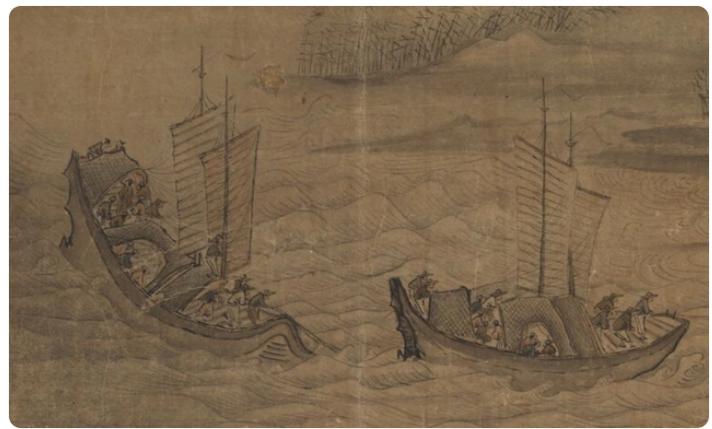
During the Sui, Tang, and Five Dynasties periods, the use of umbrellas became more common. In addition to being used for rain prevention in daily life, people also used umbrellas to shade from the sun and avoid the heat. As Xu Xuan of the Song Dynasty wrote in "Ji Shen Lu": "Su Jianxiong, the commander of the Jiangnan Army,... held an umbrella and covered himself in the scorching heat."
Like the previous dynasties, the rulers of the Sui and Tang dynasties also made very specific regulations on the use of umbrellas. As stated in the Book of Sui, Book of Rites: "Wang, a commoner surnamed Wang, with a rank of three or more officials in the same department, was a princess, a pheasant tailed umbrella, and a purple umbrella. The emperor and officials of the third or higher rank had a green umbrella and a red one. His green umbrella and blue one reached the level of scholars, which was irresistible."
At that time, the royal family and officials above the third rank generally used purple umbrellas and red umbrellas, and the middle and lower class literati had already become popular in using turquoise umbrellas, so they were not prohibited.
People also make full use of various natural materials bestowed by nature to make raincoats, such as the abundant brown silk in the Jiangnan region. Brown silk is a fiber on the bark of palm trees, which can be processed and woven into raincoats, commonly known as "brown coats".

The Tang Dynasty poet Wei Yingwu wrote a poem titled "Sending to the Residency in Brown Clothes on Mount Lu", which reads "Wuwu Mountain has nowhere to return, and the fierce tiger in the mountain recognizes the brown clothes.". The depiction of "a lone boat on a straw hat, fishing alone in the cold river snow" in Liu Zongyuan's "Jiang Xue" can be described as having a painting in the poem, and reading it makes one feel that it comes to mind.
Song and Yuan dynasties
By the Song Dynasty, the use of umbrellas had become very common. According to the "Yu Fu" in the "History of Song", "umbrellas were commonly used by people and officials, and blue silk was used." At that time, green silk cool umbrellas were popular among officials of all sizes.
Green silk umbrellas are also used in wedding customs. In the "Marriage" volume of the "Dream of Liang Lu", it is recorded: "When welcoming the wedding day, the male family carves the time and orders the groom to hold colors, such as vases and candles... Green umbrellas and chairs... go to the female family to welcome the new couple."
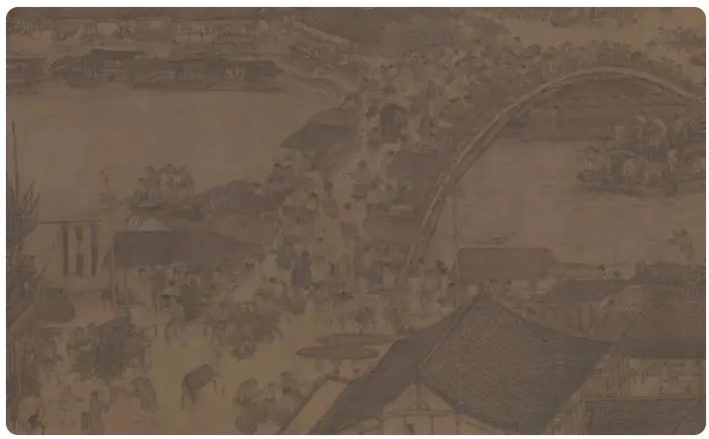
According to statistics, there were a total of 42 umbrellas in the famous painting "Along the River during the Qingming Festival" of the Northern Song Dynasty, indicating the popularity of umbrellas at that time. According to Wu Zimu's "Dream Liang Lu", there were many types of umbrellas at that time, with diverse shapes and rich colors. The umbrella industry in the capital city of Lin'an was developed, making it the production center of the country.
The sun umbrella seen today has already appeared in the capital city of Bianjing during the Northern Song Dynasty and is widely used by merchants. In front of many shops along the street in "Along the River during the Qingming Festival", there are large open sunshades, and there are also many small vendors doing business under the open umbrellas on both sides of the street.
Officials in the Song Dynasty even used oil paper umbrellas to solve cases. Shen Kuo recorded a story in his "Dream Creek Essays": "There was a case of assaulting a deceased person, with thick wounds to be examined, and thin ones such as lees, ashes, and soup, all without any signs of injury... Cover them with new red oil umbrellas in the middle of the day, fertilize their bodies with water, and their traces will be seen."
Ming and Qing dynasties
According to the "Study of Ancient and Modern Things", the Ming Dynasty made detailed regulations on the use of umbrellas by officials of the first to ninth rank, and different levels used umbrellas of different colors and styles, which could not be exceeded.
During the Ming and Qing dynasties, the styles and materials of umbrellas did not change much compared to the previous generation, mainly including square umbrellas, straight handle umbrellas, crank umbrellas, Luo Xiu umbrellas, and oil silk umbrellas.

In the 21st chapter of "Dream of the Red Chamber", it is written: "Baoyu listened and had to come back. Just arrived at Qinfang Pavilion, saw Tanchun coming from the Autumn Shuangzhai, surrounded by a gorilla felt cloak, wearing a Guanyin pocket, supporting a little girl, and a woman behind her holding a green silk and oil umbrella."
At that time, oil paper umbrellas and oil cloth umbrellas were commonly used in society, with blue as the main color. However, today, we have various folding umbrellas, automatic umbrellas, nano waterless umbrellas, and so on.
After the Ming Dynasty, the production of raincoats became increasingly sophisticated. According to the "Zhuozhong Zhi", some court officials wore raincoats made of silk and cocoon paper, and sometimes also red raincoats.

